This image of embroiderers seated at sewing frames was probably an exhibition photograph. These craftsmen are working with thread which has been mixed with gold wire made from gold leaf and then melted onto silver bars and forced through small holes in a steel plate to form very fine gauge wires. The thread is used to embroider a wide range of garments; shawls, scarves, sari and turban borders, shoes, purses, tablecloths and many other items. It was held that metal threads from India were less likely to tarnish than similar products from other sources.
1873- Dyers at work
Some evidence shows that textile dyeing dates back as early as the Neolithic Period or New Stone Age, which took place around 10,200 BCE. Dyes were originally derived from sources found in nature such as vegetables, plants, trees, lichens, and insects.
The vats are of clay and built-in as shown in the picture. The furnace goes right under the vat, the fuel used is the integument of the coca-nut.


1873- Cloth Stamper
Cloth stamper seated at a low table on the verandah of a house. This was done by wooden stamps, which are charged with the colouring matter, and applied one after the other as the design may require.

Saree Weaving
Bunkar was the major skill set at that time and the business of Saree Weaving was flourishing, now both of them are in bad condition. In the picture, the weaver sits on the verandah of a house with his legs in a type of hole which contains the lower portion of the machinery which he works with a pedal at his feet. The combs are supported by ropes attached to beams in the roof. In his right hand, the weaver holds the shuttle, which contains the thread which passes through the spaces created by the combs, forming the pattern. The principal comb is held in the left hand.

Shoe-Makers
This image of a group of shoemakers seated at work on the verandah of a workshop.

Women selling vegetables from a basket
This trade still exists in rural area.

Woodcarvers at work
This image showing two woodcarvers at work, surrounded by elaborately carved furniture in the workshop
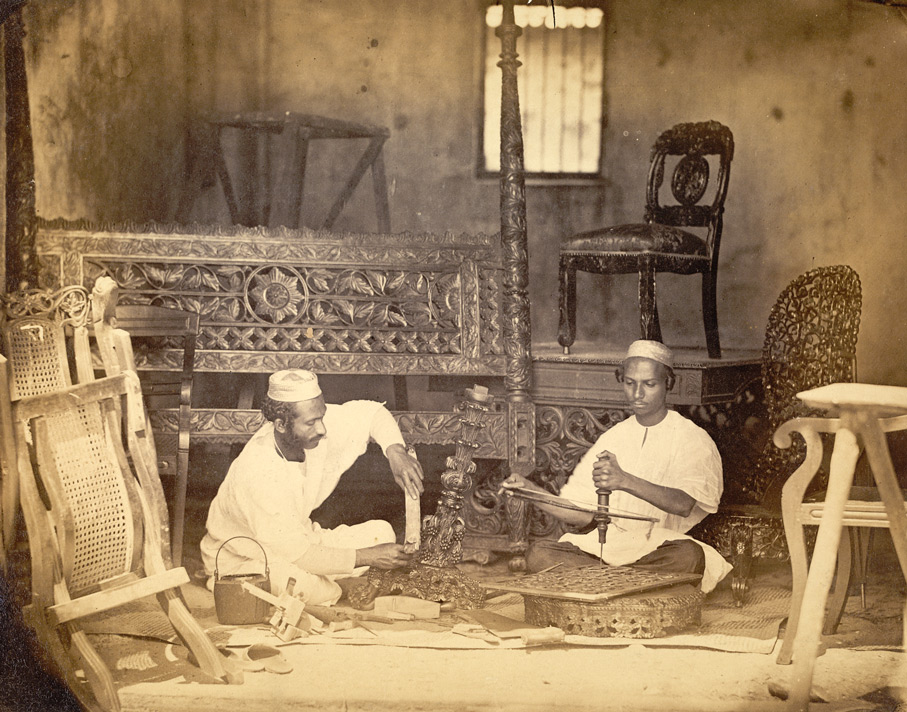
Gold Puggree Border Weaver
This image shows a craftsman weaving the border of a puggree, an expensive turban, made of gold thread; thread which has been mixed with gold wire made from gold leaf melted into silver bars and forced through small holes in a steel plate to form very fine gauge wires. Metal threads from India were considered less likely to tarnish than products from other sources. The pulleys of the narrow loom pictured are affixed to the wall opposite the weaver and also to the ceiling of the small workshop and there appear to be regimental badges attached to the wall.
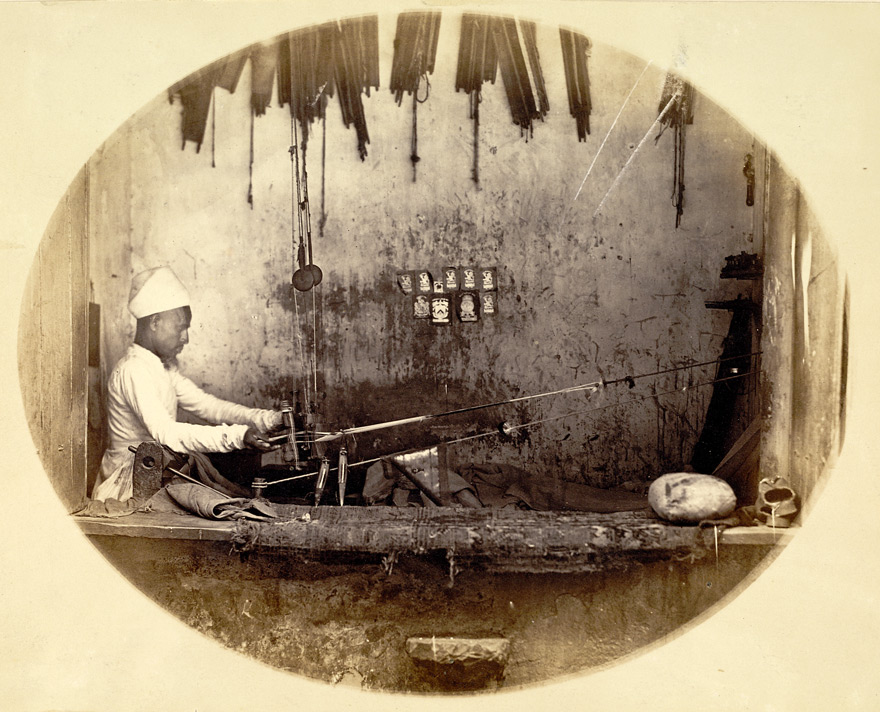
Sandalwood Carvers
The carving of sandalwood boxes is one of the traditional crafts of India and many examples were sent to the exhibition by a number of craftsmen, particularly from Bombay and Madras. Examples exhibited included workboxes, handkerchief and glove boxes, jewellery and money boxes together with many other carved objects.

Blacksmiths at work
The blacksmith is as indispensable to the wants of the community in these days when the iron is so much used, as is the carpenter...He works sitting on his heels, and has an anvil, large or small, a sledgehammer used by an assistant, a smaller one for his own hand, pincers, files (which he makes himself and tempers), and a bellows, which consists of two sheepskins, with iron nozzles fitted to them open at the other end, which is fitted with two pieces of wood faced with rough leather. The blower opens and shuts these alternately, pressing out the air with his hand, so that a continuous stream od air is kept up in the charcoal fire. This simple apparatus can be moved anywhere, set up in a few minutes, and is perfectly effective for ordinary work.
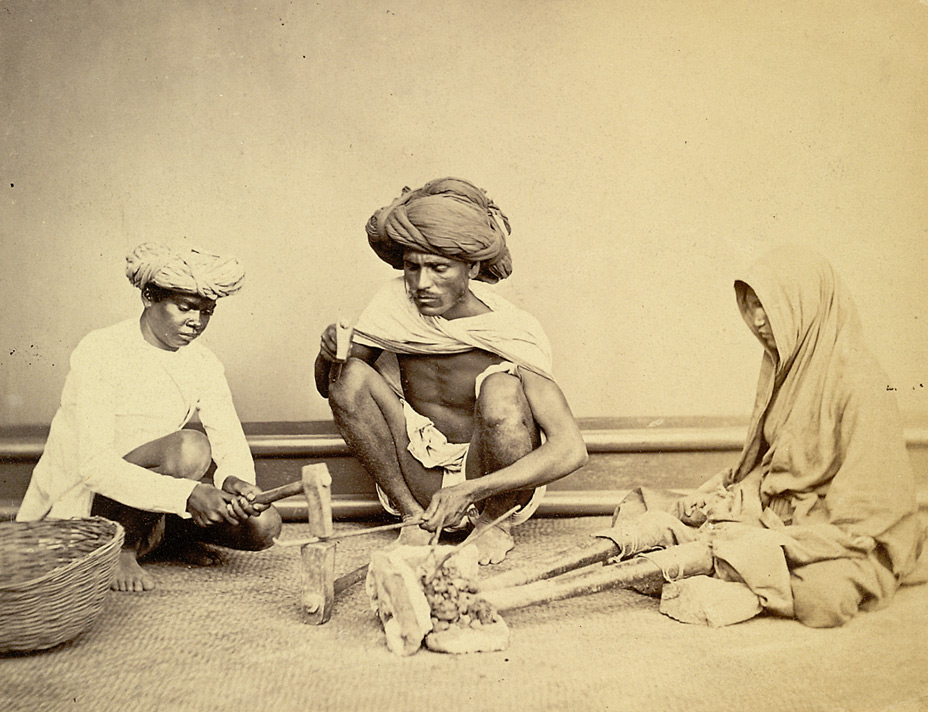
Turban Folders at work
This image, of a group of workers folding turbans on wooden model heads.
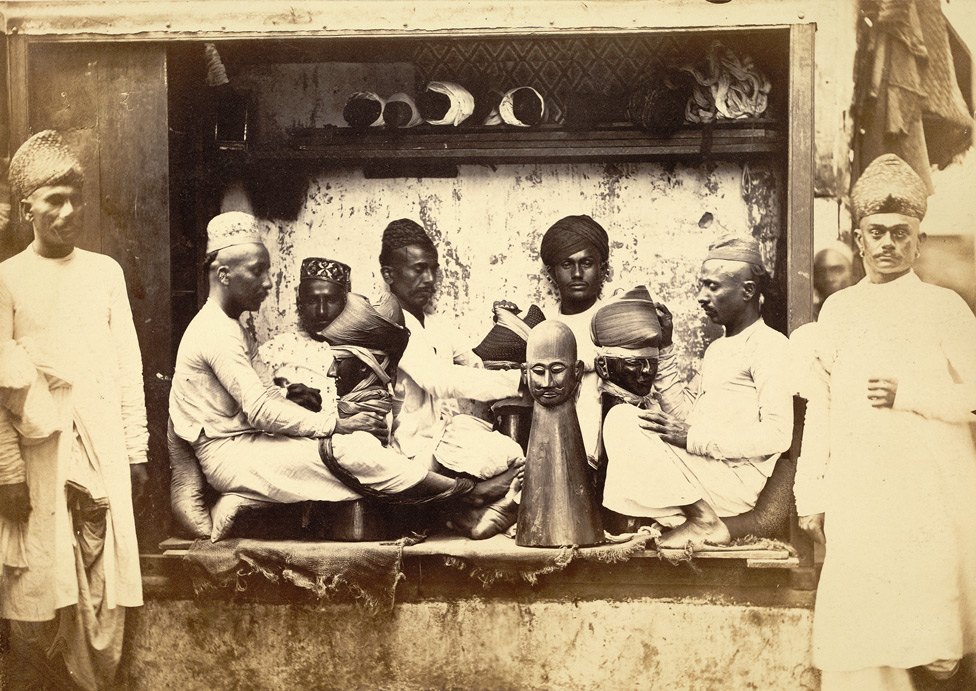
Barber
Barber used to visit homes at that time.
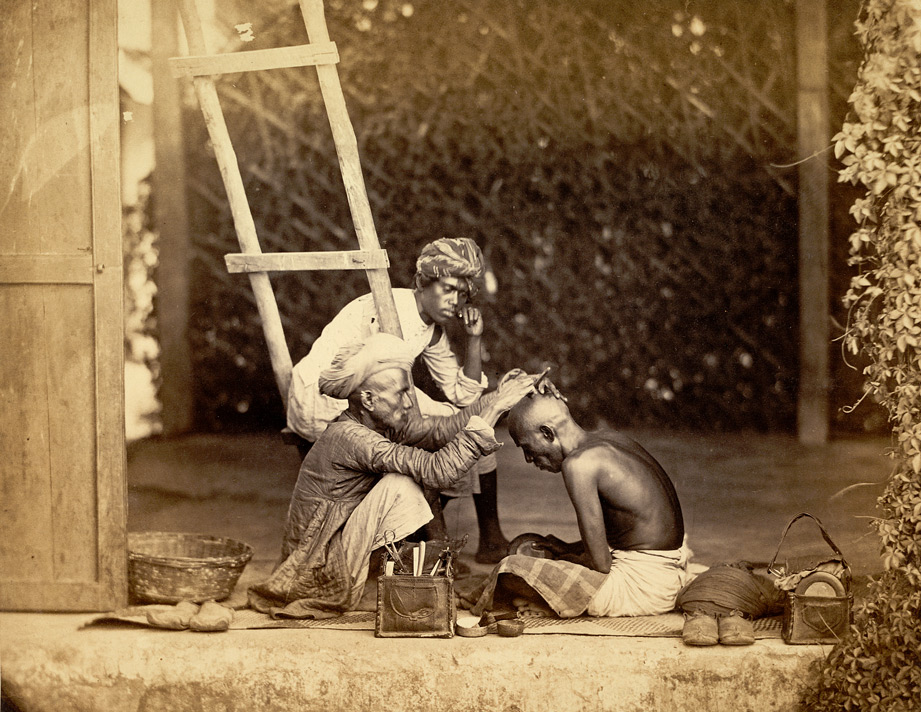
Grinding at home
Two women grinding at a mill at home.
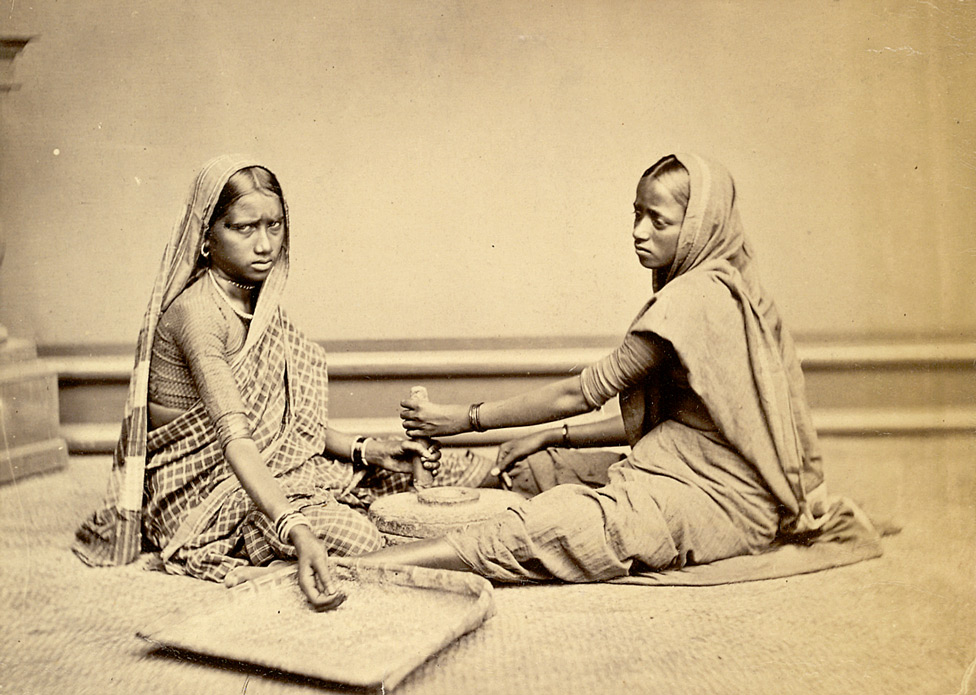
Silk Design Knotters
This image of three figures seated at work on a verandah is probably an exhibition photograph. These silk workers are tying pieces of silk fabric into multiple pleats and knots before dyeing to produce intricate patterns. This process, which is known as 'tie and dye', may be repeated numerous times to produce multicoloured lines, spots and rings on the fabric. In India, this traditional technique is known as Bandhani, from the Sanskrit word bandhana, which means 'tying', and is the origin of the word bandannah.
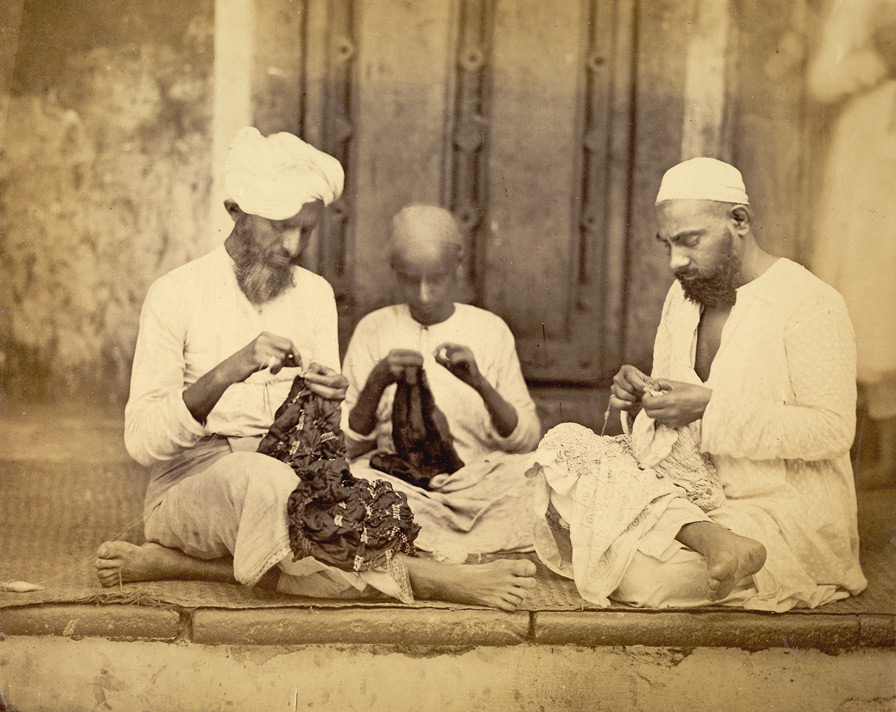
Washermen at work
Photograph of washermen (dhobis) at work beside a river
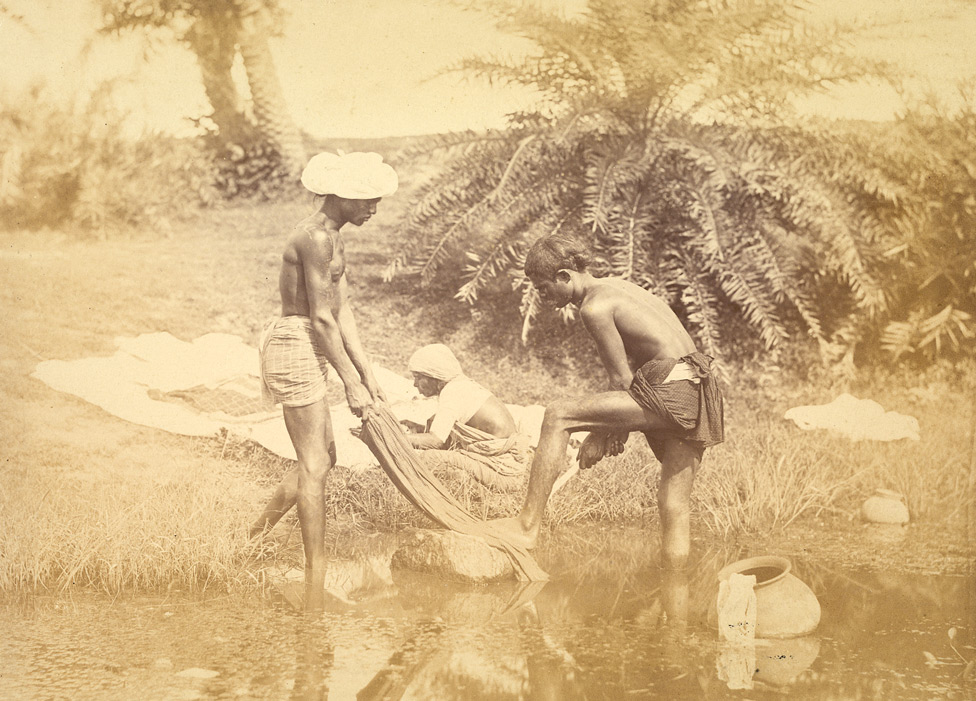
Manual Fan Operators
3 Indian men in a verandah pulling fan strings, the punkahwallahs or the fan operators who manually worked large swinging fans suspended from ceilings to waft air around homes and offices of British Officers.
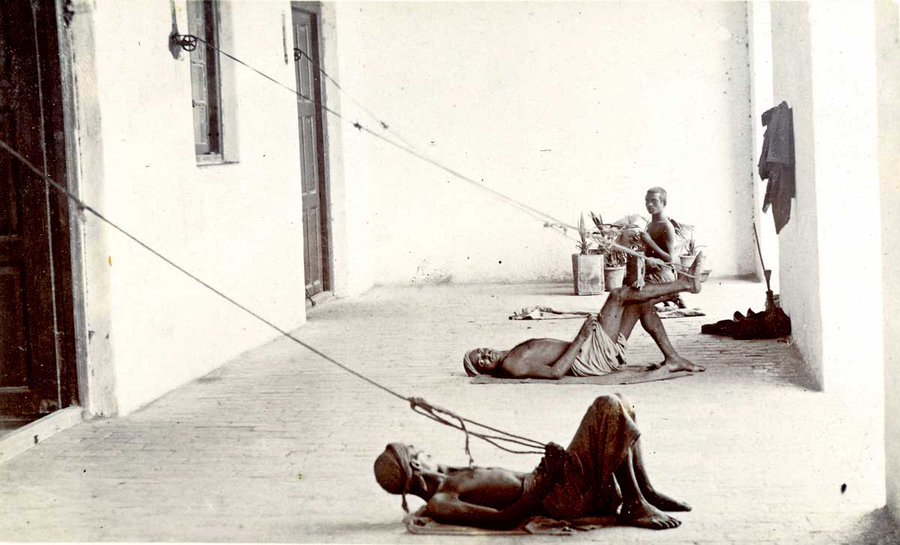
Source- British Library